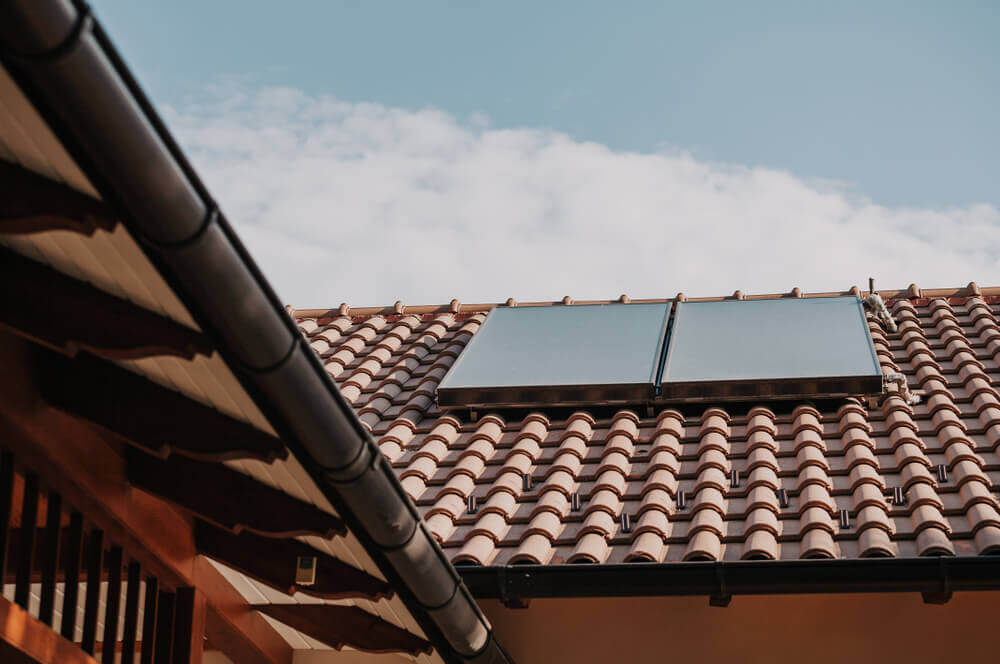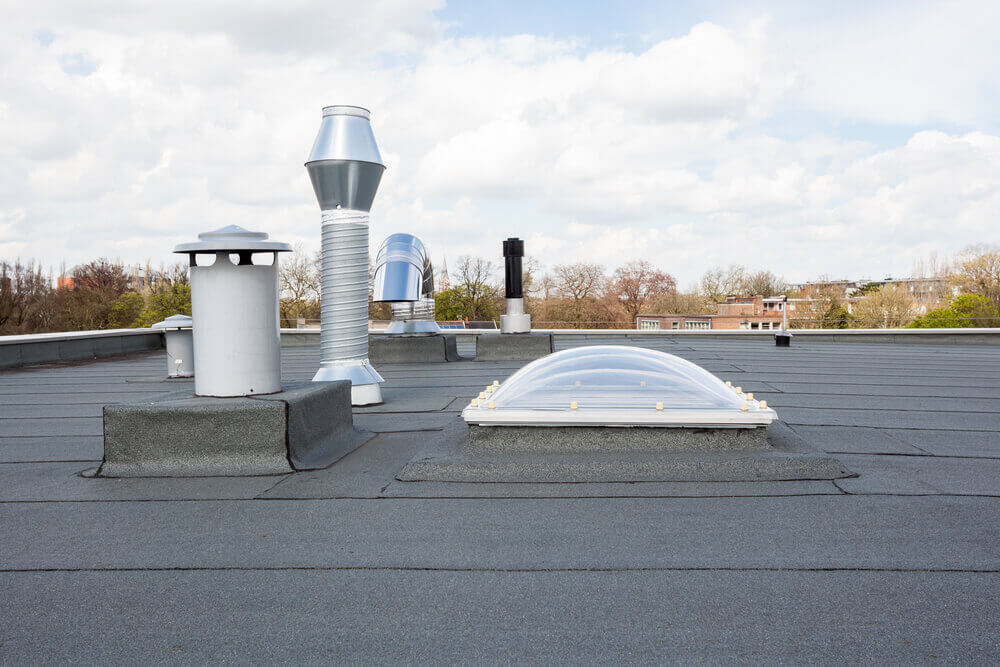3 Ways to Waterproof Your Home

Spring is a season that’s bursting with contrasts. In spring, temperatures start rising and days last longer. But it also means fluctuating weather patterns, like rain storms. All of that rain can mean irreversible damage to your home. Fortunately, we have 3 solutions to waterproof your home.
Water damage can cause serious complications. Over time, water can create moisture problems that lead to leaking heat, condensation and even fungus or mold.
But you can keep them all at bay as long as you take the necessary precautions against moisture problems.
A waterproof home exterior

Your home’s exterior walls are very vulnerable to moisture problems because they directly encounter rainstorms.
The streams of water can provoke certain dangers not only in your home’s stability but also the health of the household members because they can give rise to mold or fungus.
But you can prevent this damage by correctly waterproofing your exterior walls.
But how do you waterproof walls?
- First, make sure your walls are healthy. In other words, make sure there are no cracks where water can enter. If you find any holes or cracks, fix them before applying a waterproofing product.
- Once you’ve checked out your walls, use mortar or a waterproof alternative. You can find all kinds of possible options on the market. When you’re browsing them, make sure your final choice is apt for your walls.
- Lastly, paint your exterior walls with a waterproof paint that’s specially designed for home exteriors. The paint will give an extra layer of protection while making your home look fabulous.
Insulated roofs help waterproof homes
Your roof is, without doubt, one of the most important areas to consider when waterproofing your home. It’s where the rain hits the hardest. In light of that, making sure that your roof is well insulated to keep moisture out is crucial.
The first step towards proper insulation is making sure that your entire roof is intact. Whether you have a flat or apex roof, choose your roof material to best suit the shape of your roof.
Shingles

If you have an apex roof, shingles are usually the way to go, but there are also other materials at your disposal. For a perfectly waterproofed roof, cover these three bases:
- Ceilings on the other side of the roof are the first step. Installing a good insulation system in your attic will help you filter out moisture as well as maintain your home temperature.
- Next, installing waterproof tiles under your roof is crucial as it will provide extra protection. By fitting in a layer of tiles, you are creating a barrier that separates your home exterior and interior.
- Lastly, make sure that all of your shingles are in perfect condition. Replace broken or damaged pieces. In addition, ensure that the sealant between the tiles and in critical areas, such as along the chimney or windows, is okay.
Flat roofs for a waterproof home

Flat roofs call for special measures because many homes use them as a roof-top space, which means it’s easier for water to pool.
If you have a flat roof, make sure you have a good drainage system. On top of that, keeping up with maintenance is the most important task to protect against water damage.
Once you’ve ensured that your drainage system is in order, install a good insulation system. There are all kinds of materials you can choose from to waterproof your roof-top.
Among those, one of the best options is asphalt roll roofing. Asphalt roofing is very economical and guarantees protection, even in areas where rainfall is frequent.
Lastly, we also recommend installing a ceramic tile layer for more protection.
Spring is a season that’s bursting with contrasts. In spring, temperatures start rising and days last longer. But it also means fluctuating weather patterns, like rain storms. All of that rain can mean irreversible damage to your home. Fortunately, we have 3 solutions to waterproof your home.
Water damage can cause serious complications. Over time, water can create moisture problems that lead to leaking heat, condensation and even fungus or mold.
But you can keep them all at bay as long as you take the necessary precautions against moisture problems.
A waterproof home exterior

Your home’s exterior walls are very vulnerable to moisture problems because they directly encounter rainstorms.
The streams of water can provoke certain dangers not only in your home’s stability but also the health of the household members because they can give rise to mold or fungus.
But you can prevent this damage by correctly waterproofing your exterior walls.
But how do you waterproof walls?
- First, make sure your walls are healthy. In other words, make sure there are no cracks where water can enter. If you find any holes or cracks, fix them before applying a waterproofing product.
- Once you’ve checked out your walls, use mortar or a waterproof alternative. You can find all kinds of possible options on the market. When you’re browsing them, make sure your final choice is apt for your walls.
- Lastly, paint your exterior walls with a waterproof paint that’s specially designed for home exteriors. The paint will give an extra layer of protection while making your home look fabulous.
Insulated roofs help waterproof homes
Your roof is, without doubt, one of the most important areas to consider when waterproofing your home. It’s where the rain hits the hardest. In light of that, making sure that your roof is well insulated to keep moisture out is crucial.
The first step towards proper insulation is making sure that your entire roof is intact. Whether you have a flat or apex roof, choose your roof material to best suit the shape of your roof.
Shingles

If you have an apex roof, shingles are usually the way to go, but there are also other materials at your disposal. For a perfectly waterproofed roof, cover these three bases:
- Ceilings on the other side of the roof are the first step. Installing a good insulation system in your attic will help you filter out moisture as well as maintain your home temperature.
- Next, installing waterproof tiles under your roof is crucial as it will provide extra protection. By fitting in a layer of tiles, you are creating a barrier that separates your home exterior and interior.
- Lastly, make sure that all of your shingles are in perfect condition. Replace broken or damaged pieces. In addition, ensure that the sealant between the tiles and in critical areas, such as along the chimney or windows, is okay.
Flat roofs for a waterproof home

Flat roofs call for special measures because many homes use them as a roof-top space, which means it’s easier for water to pool.
If you have a flat roof, make sure you have a good drainage system. On top of that, keeping up with maintenance is the most important task to protect against water damage.
Once you’ve ensured that your drainage system is in order, install a good insulation system. There are all kinds of materials you can choose from to waterproof your roof-top.
Among those, one of the best options is asphalt roll roofing. Asphalt roofing is very economical and guarantees protection, even in areas where rainfall is frequent.
Lastly, we also recommend installing a ceramic tile layer for more protection.
All cited sources were thoroughly reviewed by our team to ensure their quality, reliability, currency, and validity. The bibliography of this article was considered reliable and of academic or scientific accuracy.
- Torres, A. (2016). Reparemos la Casa: ¿Cómo reparar y mejorar tu casa?. Estados Unidos: Ediciones Torres.







